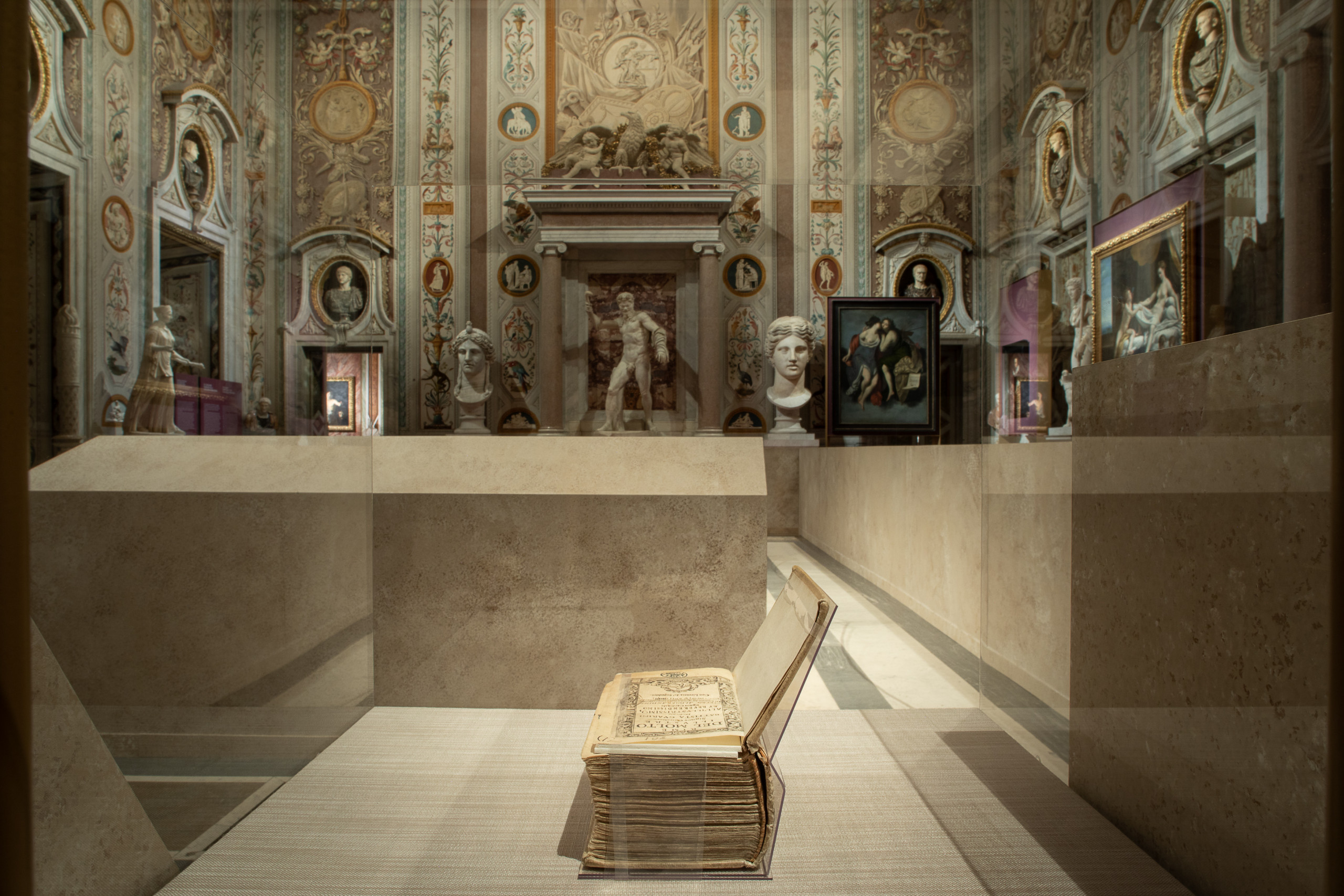POETRY AND PAINTING IN THE SEVENTEENTH CENTURY: AN INTRODUCTION TO GIOVAN BATTISTA MARINO

‘A thousand portraits have been made of me in Rome’: Giovan Battista Marino wrote this in 1623, when he returned to the city after a triumphant stay in Paris. Indeed, excellent artists made many portraits of the poet, such as the now-lost works by Caravaggio, Simon Vouet and Guido Reni. Amongst the surviving portraits, Frans Pourbus’ splendid depiction stands out: he presents the poet as proud, with a book in his hand, a symbol of his success and poetic genius, the very thing that earned him his knighthood.
Just one year after the poet’s death, the Florentine Francesco Furini would paint his ‘manifesto’ on the partnership between the sister-arts of Poetry and Painting, a concept that informed all of Marino’s works.
In truth, however, thanks to the great masters of Renaissance Italy – Leonardo, Raphael, Michelangelo, Correggio and Titian – sixteenth-,century Painting triumphed over Poetry—‘a victory that was given eloquent testimony by the efforts of poets’ sensual descriptions that were intended to compete with the [painters’] brushes’ (Praz). The ‘favole’ (mythological subjects) depicted by Raphael, Correggio, Titian, and later Luca Cambiaso and Jacopo Tintoretto, drawn from the myths described in canonical texts from antiquity, sealed in the Seicento the fate of these painted ‘poems’ which, as you will see in the following sections, consistently nourished Marino’s poetic efforts and drove his appetite as a collector.